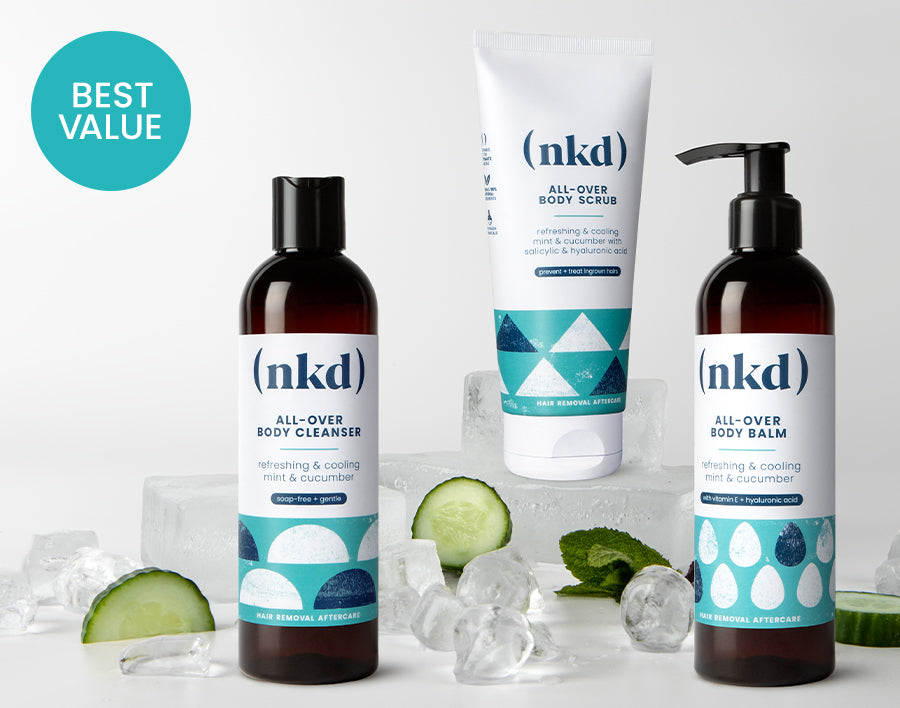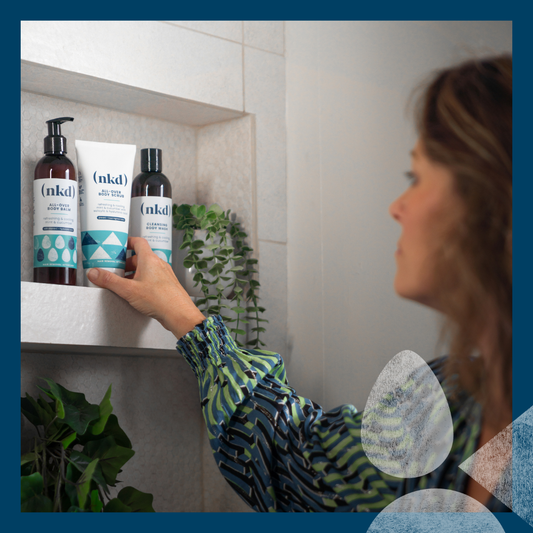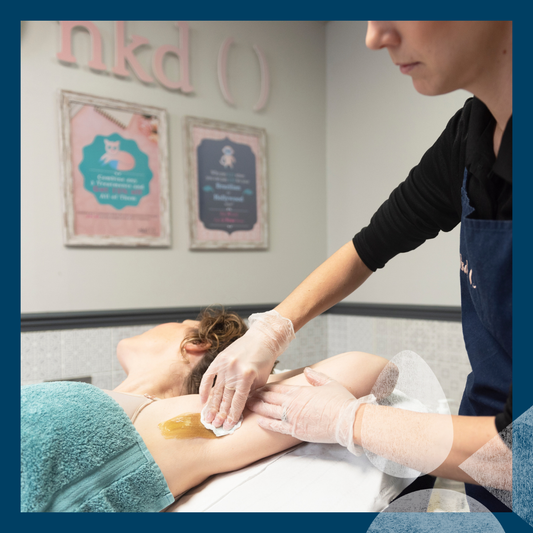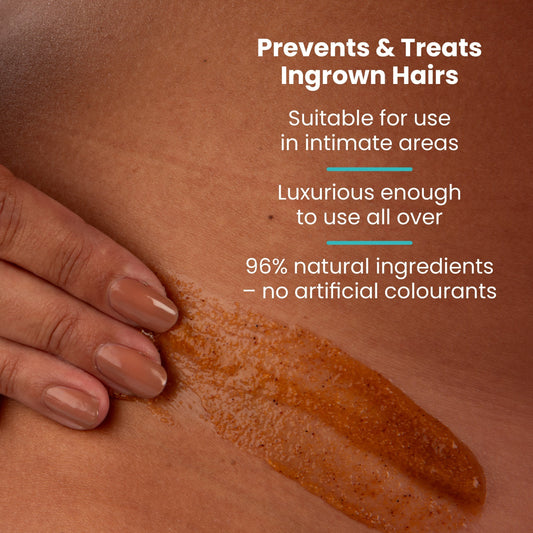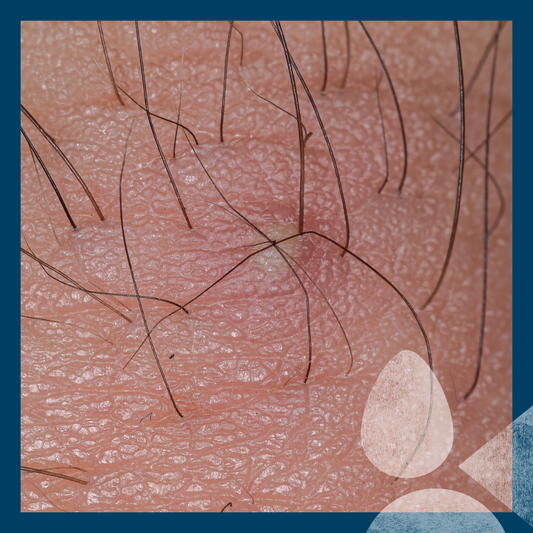Ingrown Hairs on the Bikini Line Causes, Prevention, Treatment and Expert Tips
Ingrown hairs are a common issue, particularly in the sensitive bikini line area. They occur when a hair grows back into the skin rather than out of the follicle, leading to irritation, inflammation, and sometimes infection. While ingrown hairs can be uncomfortable and unsightly, understanding ingrown hairs causes and knowing how to treat and prevent ingrown hairs can help you maintain a smooth and irritation-free bikini line.
Here’s everything you need to know about ingrown hairs on the bikini line.
What Are Ingrown Hairs on the Bikini Line?
Ingrown hairs develop when hair, instead of growing outward from the follicle, curls back into the skin. This can happen after various hair removal methods such as shaving, waxing, or plucking. The trapped hair causes the skin to react as though it’s being punctured, resulting in irritation and discomfort.
Signs of Ingrown Hairs on the Bikini Line
If you have an ingrown hair in the bikini area, you may notice the following symptoms

Raised Bumps: These are small, itchy lumps where the hair has grown back into the skin.
Redness: The affected area may become inflamed, causing visible redness around the follicle.
Pain and Swelling: Ingrown hairs can cause swelling and pain, particularly if the hair is deeply embedded in the skin.
Pus-Filled Bumps: If an ingrown hair becomes infected, it may develop into a pus-filled bump.
Dark Spots: Hyperpigmentation or dark patches around the ingrown hair may appear, especially in individuals with darker skin tones, due to skin irritation.
What Causes Ingrown Hairs on the Bikini Line?
Several factors can contribute to ingrown hairs in the bikini line

- Shaving: Shaving cuts the hair at an angle, which can encourage it to curl back into the skin.
- Waxing: While waxing removes hair from the root, it can lead to ingrown hairs if the hair grows back incorrectly or gets trapped under the skin. This often happens when a poor waxing technique is followed or if unsuitable wax products are used. Both of these issues can cause hairs to snap rather than be pulled out from the room, which can lead to ingrown hairs.
- Plucking: Plucking, like waxing, can result in ingrown hairs if the hair regrows in an abnormal direction.
- Curly or Coarse Hair: People with curly or coarse hair are more prone to ingrown hairs because their hair is more likely to curl back into the skin as it grows.
- Tight Clothing: Wearing tight underwear or swimwear can cause friction and push the hair back into the follicle, increasing the risk of ingrown hairs.
Prevention Tips for Ingrown Hairs on the Bikini Line
The best way to deal with ingrown hairs is to prevent them from happening in the first place. Here are some proactive measures you can take to avoid irritation and discomfort

IF you Shave, Shave Properly!
Shave in the direction of hair growth: This helps prevent hairs from curling back into the skin. Shaving against the direction of hair growth can irritate the follicle, leading to ingrown hairs.
Use a sharp razor: A dull razor increases friction and can cause hair to be cut at an angle, which encourages ingrown hairs. Change your razor regularly to keep it sharp.
Avoid shaving too closely: Leave a small amount of stubble, which helps prevent hair from digging back into the skin.
Soften the skin before shaving: Use warm water or take a warm shower before shaving to soften both the skin and hair, making it easier for the razor to glide smoothly.
Avoid Over-Shaving
Space out your shaving sessions: Shaving too often can irritate the skin, increasing the risk of ingrown hairs. Try to give your skin time to recover between sessions.
Consider Alternative Hair Removal Methods
If you’re particularly prone to ingrown hairs, consider alternative forms of hair removal, including waxing, epilating, sugaring, or laser hair removal. These methods remove hair from the root, which reduces the likelihood of hair growing back improperly.
Exfoliate Regularly
Gently exfoliate the bikini line 2-3 times a week: Exfoliation removes dead skin cells that can clog hair follicles and trap hairs. Use a gentle exfoliating scrub or a washcloth with mild exfoliants like salicylic acid or glycolic acid.

Do not exfoliate or scrub too harshly as this can irritate the area or scratch the skin and actually make the problem worse.
Choose a Suitable Body Exfoliating Scrub! A lot of exfoliating body scrubs are NOT suitable for the delicate bikini line and intimate area! Choose a product which has been formulated exactly for this use, which will not cause further irritation or reaction.
Moisturise After Hair Removal
Hydrate the skin: Applying a gentle, non-greasy moisturiser after shaving or waxing helps keep the skin smooth and reduces irritation that can lead to ingrown hairs. Ingrown hairs are so often caused by dry flaky skin which the new hair struggles to break through, so it’s vital to keep your skin as soft, smooth and supple as you can.

Choose a Suitable Intimate Moisturiser! A lot of body moisturisers are also NOT suitable for the delicate bikini line and intimate area! Choose a product which has been formulated exactly for this use, which will not cause further irritation or reaction.
Look out for naturally antibacterial ingredients: Ingredients such as Tea Tree Oil and Benzoin are naturally anti-bacterial/ antiseptic/ antimicrobial. These are perfect for use immediately after hair removal. Other ingredients such as Hyaluronic Acid are extremely effective in maintaining hydration. Look for body moisturisers which will soothe sensitive skin after hair removal and prevent dryness, which often triggers skin irritation.
Avoid Tight Clothing Immediately After Hair Removal
Wear loose-fitting clothes: Tight underwear, swimwear, trousers and leggings can rub against the bikini line and cause hair to grow back into the skin. Opt for looser, breathable fabrics to reduce friction and irritatio, especially in the 24 - 48 hours after hair removal.
How to Treat Ingrown Hairs on the Bikini Line
If you already have an ingrown hair, there are several treatment options you can try to soothe the area and encourage the hair to break through the skin.

Warm Compresses: Apply a warm, damp cloth to the affected area. This helps soften the skin and may bring the hair closer to the surface.
Exfoliation: Gently exfoliate the area around the ingrown hair using a mild scrub or exfoliating pad. This will help remove dead skin cells and free the trapped hair. Look for exfoliants containing salicylic acid or glycolic acid.
Topical Treatments: A mild steroid such as hydrocortisone can help reduce inflammation and soothe redness, or other over-the-counter creams can be applied especially if the ingrown hair is starting to become infected.
Sterile Tools: Once the ingrown hair has risen to the surface, use sterile tweezers or a needle to carefully remove it. Avoid digging into the skin to prevent infection.
What to Avoid
To minimise the risk of ingrown hairs, be sure to avoid the following:
Don’t pick or squeeze: Avoid picking, squeezing, or digging into ingrown hairs, as this can lead to infections or scarring.
Avoid shaving too closely: Leaving a tiny bit of stubble can help prevent hair from growing back into the skin.
Don’t use a dull razor: Always use a sharp razor to reduce irritation and the risk of ingrown hairs.
When to Seek Professional Help
If you experience persistent or severe issues, consider consulting your GP or a dermatologist.
Infection: If the ingrown hair becomes infected (pain, swelling, or pus), you may need antibiotics.

Frequent Ingrown Hairs: If you experience ingrown hairs regularly, professional treatments like laser hair removal may offer a more permanent solution.
Severe Skin Damage: If you notice blisters, oozing, or burns after hair removal, seek medical attention immediately.
Ingrown hairs on the bikini line are a common problem, but in most cases they can be managed with proper care. By using correct hair removal techniques, exfoliating regularly, moisturising after hair removal, and considering alternative hair removal methods like waxing or laser treatments, you can significantly reduce the occurrence of ingrown hairs. If ingrown hairs do appear, treatment with warm compresses, gentle exfoliation, and topical treatments can help alleviate discomfort and promote healing. For long-term relief, consider professional hair removal treatments to minimise future occurrences of ingrown hairs.


